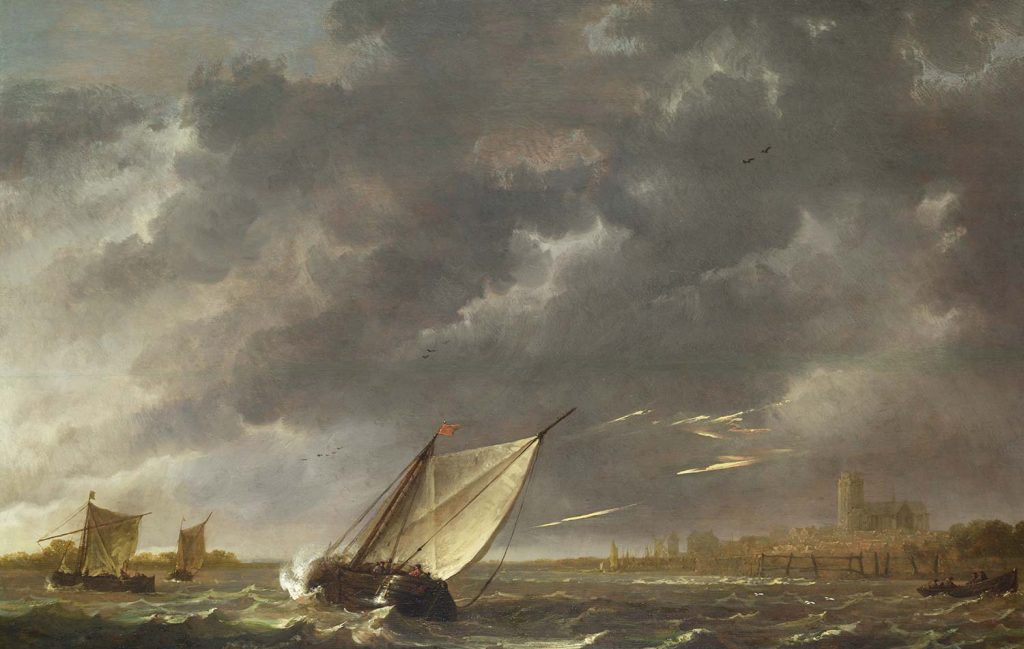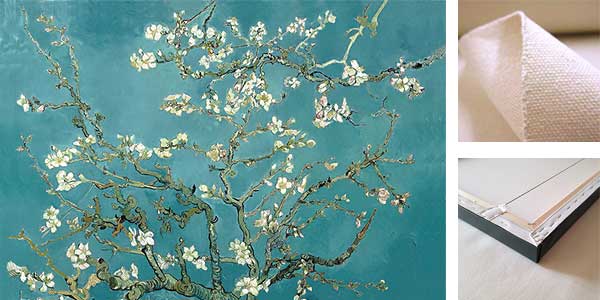
The Maas in Dordrecht in a Storm by Aelbert Cuyp was created in 1645 – 1650. The painting is in National Gallery London. The size of the work is 49,8 x 74,4 cm and is made of oil on wood.
About the Work
Aelbert Cuyp is best known for landscapes which evoke a strong sense of peace, plenty and prosperity. He often painted this view across the water to his home town of Dordrecht, which is defined by the large bulk of the Grote Kerk (Great Church). But normally in Cuyp’s paintings the scene is a calm one – the water is mirror-still and sails hang limp from the mast.
This picture, which is probably an early work, is very different. It is defined by the lightning which flashes across the sky above the town. Instead of a sense of timelessness, it captures an instant – the moment when the gleaming rooftops and the church tower in the background have been illuminated by the sudden blaze of light, while rain pours from a leaden sky. In the foreground, the clouds seem to be clearing and a burst of sunlight catches the spray thrown back over the bow of the boat nearest us. The churning waves are capped with foam and the sail is blown taught against the rigging. Oarsmen in a small boat heave against the choppy sea. Read more in National Gallery London
About the Artist
Aelbert Jacobszoon Cuyp or Cuijp (20 October 1620 – 15 November 1691) was one of the leading Dutch Golden Age painters, producing mainly landscapes. The most famous of a family of painters, the pupil of his father, Jacob Gerritszoon Cuyp (1594–1651/52), he is especially known for his large views of Dutch riverside scenes in a golden early morning or late afternoon light. He was born and died in Dordrecht.
Known as the Dutch equivalent of Claude Lorrain, he inherited a considerable fortune. His family were all artists, with his uncle Benjamin and grandfather Gerrit being stained glass cartoon designers. Jacob Gerritszoon Cuyp, his father, was a portraitist. Cuyp’s father was his first teacher and they collaborated on many paintings throughout his lifetime. Read more in Wikipedia
Order a reproduction of this work (printed on canvas)
